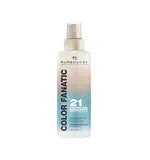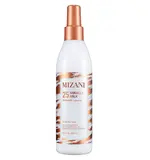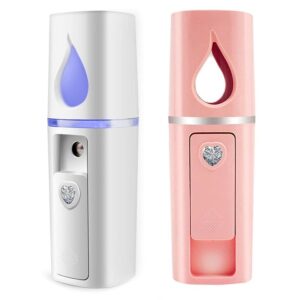
After a day on the shores of Marbella, Spain, Isabella Skeel-Gerhardt stirred from a sleepy haze to an undeniable sensation. Something wasn’t right. “I asked my friend to come in and look at me, and I will never forget the expression on her face. She was completely shocked,” the Copenhagen-based content creator recalls. “When I saw myself, I didn’t know whether to laugh or cry. My lips were getting bigger and bigger.”
For nearly three hours, Skeel-Gerhardt’s lips continued to expand. “It felt like they were about to explode,” she shares, “I was afraid my lips might fall off.” Although the doctors at the hospital were stumped, they landed on one potential theory: Perhaps those five hours in the hot summer sun had affected her lip filler.
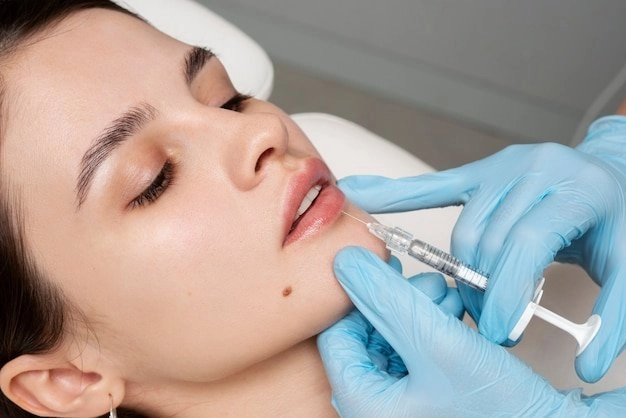
Skeel-Gerehardt was given an injection in her posterior and a seven-to-10-day round of antibiotics that quelled the swelling. Still, the experience and the language barrier left her with more questions than answers. The most pressing of which was, how did this possibly happen now? After all, it had been nearly 20 months since she’d received 0.7 millimeters of filler in her lips, the first and only time her lips were injected.
Despite the years of anecdotal evidence about the sun’s effect on fillers, a quick look into the research revealed clashing medical opinions, scarce medical data, and few definitive answers. So, does sun exposure really affect filler?
First, let’s review what we already know.

Hyaluronic acid is a naturally occurring substance already found in the skin that keeps it plump and hydrated. However, given its track record, it’s no surprise that many popular fillers are just injectable hyaluronic acid, according to the American Board of Cosmetic Surgery. These hyaluronic acid dermal fillers are injected into the dermis and treat a range of concerns, including wrinkles, thinning lips, fine lines around the mouth, loss of volume under the eyes and on the back of hands, and nasolabial folds, among others. While outcomes and longevity vary based on injection location and patient characteristics, the American Society for Dermatologic Surgery reports that results generally last between six and 12 months.
According to Dr. Jennifer Lee, MD, board-certified dermatologist and medical director of REN Dermatology, even though injectable hyaluronic acid acts like the body’s own naturally produced hyaluronic acid, there are slight differences between the two. Per a 2013 review in the Dermatologic Surgery Journal, dermal fillers use chemically modified hyaluronic acid to make it last longer in the body. Different types of hyaluronic acid fillers have other characteristics and often differ in particle sizes depending on their intended use.
When exposed to direct sunlight, UVA and some UVB rays can penetrate the dermis and, with enough exposure, break down stores of naturally occurring hyaluronic acid, explains Dr. Jessie Cheung, MD, a board-certified dermatologist with practices in Chicago and New York. With the popularity of hyaluronic acid-based fillers, it’s not far-fetched to infer that excessive sun exposure can make dermal fillers dissolve faster by breaking down its hyaluronic acid.
But things are more complex.
In speaking to fifteen-plus dermatologists and plastic surgeons about the phenomenon, it became apparent that there was a lack of consensus regarding the effects of sun exposure on filler treatments. And while this phenomenon isn’t anything new—the Journal of Cutaneous and Aesthetic Surgery published an article highlighting the complications of sun exposure on dermal fillers in 2018—some doctors felt hesitant to link the two definitively. Three key factors account for this discrepancy.
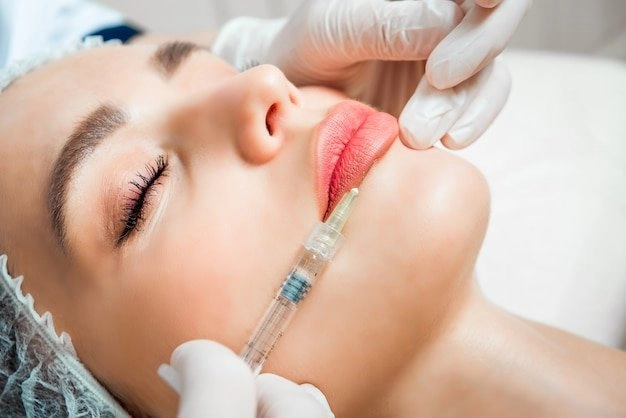
The first is with the term “sun exposure” itself. “Obviously, we know that UV exposure generally degrades collagen, elastin, and hyaluronic acid, but how much of it is going to be degraded?” says board-certified plastic surgeon Dr. Jennifer Levine, MD. “How much exposure would be needed to degrade filler? I don’t know. How many hours of intense sun exposure is needed to really make a difference?”
There’s an inherent ambiguity in “sun exposure.” It’s difficult to quantify what constitutes sun exposure and even more challenging to quantify what constitutes excessive exposure.
Double-board certified integrative medicine doctor and aesthetics specialist Dr. Rahi Sarbaziha, MD, agrees: “There’s no specific duration of sun exposure that universally triggers hyaluronic acid breakdown. It varies from person to person. However, excessive UV exposure, particularly from sources like tanning beds, can expedite the dissolution of fillers.”
The discrepancy is made all the more confusing by a second issue: What about all the other factors that make dermal fillers dissolve faster?
According to Dr. Sarbaziha, varied rates of filler dissolution are already dependent on the type of filler used and the treatment sites. While sun exposure can be a primary factor, degradation can also result from smoking habits, exercise, weight loss, certain medications, and the patient’s metabolism.
Both issues are exacerbated by a third, perhaps most pressing, factor: the surprising lack of clinical research available.
“This divide among doctors exists because there hasn’t been a controlled study where they’ve injected fillers into human skin, subjected the skin to UV exposure, and then biopsied the skin to compare the breakdown of filler,” Dr. Cheung explains. “I doubt anyone would want to test this out and risk damaging their skin, and we certainly don’t want our patients to expose their skin to sun on purpose to test out a theory.”
Unfortunately, it’s hard to tell what is happening without a biopsy.
“Yes, we know that UV radiation is going to degrade things, but how much radiation does it take, and how much is degraded?” Dr. Levine posits. “It’s not easy to think of a controlled study that’s really going to tell us exactly what’s going on. But let’s say we want to extrapolate from the data we do have. We know sun exposure is going to degrade collagen, elastin, and hyaluronic acid, therefore it is, in theory, going to degrade filler.”
But if there’s no conclusive evidence to definitively say how much sun exposure is going to cause hyaluronic acid degradation and whether that’s enough to affect filler, then why are patients advised to limit sun exposure for the first few weeks after filler treatment?
It’s not so much about the filler itself as it is about the injection and the body’s response to that injection.
“There are precautions, related to sun exposure, that need to be followed after receiving facial filler,” says Dr. Lyle Leipziger, MD, chief of plastic surgery at North Shore Hospital and LIJ Medical Center. “Some facial injections may cause bruising and swelling, which can produce inflammation if exposed to the sun too early
